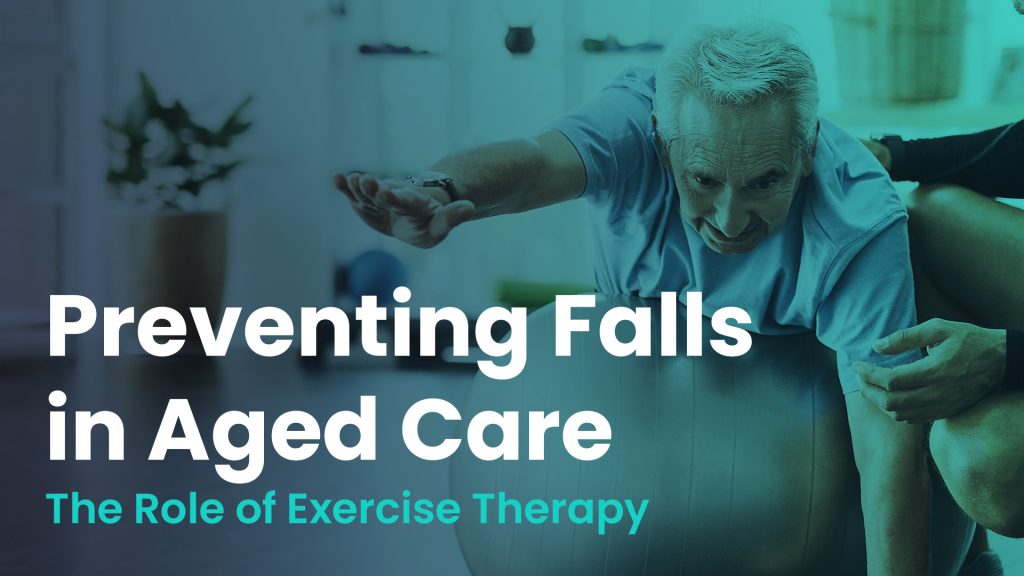
Falls are one of the most common and serious risks for older adults, particularly those living in aged care facilities. However, falls are not an inevitable part of ageing. Exercise therapy offers a proactive approach to reducing fall risk, improving strength, balance, and confidence in older adults. This blog explores how exercise can prevent falls and promote safer, more independent living for seniors.
Why Falls Occur
Falls often occur due to a combination of factors, including:
- Muscle Weakness: As we age, muscle mass decreases, leading to weakness and instability.
- Balance and Coordination Issues: Reduced balance and slower reflexes increase the risk of falling.
- Chronic Conditions: Conditions like arthritis, osteoporosis, and Parkinson’s can affect mobility and stability.
- Environmental Hazards: Poor lighting, loose carpets, and uneven surfaces in aged care settings can also contribute to falls.
Exercise as a Key Strategy for Falls Prevention
Exercise therapy can help mitigate these risks by:
- Improving Muscle Strength: Strength training exercises help rebuild muscle mass and improve stability.
- Enhancing Balance and Coordination: Balance exercises, such as Tai Chi or single-leg stands, improve coordination and reduce fall risk.
- Increasing Flexibility: Stretching exercises improve flexibility, making it easier for seniors to move safely and confidently.
- Promoting Confidence and Independence: Regular exercise helps seniors feel more confident in their movements, reducing the fear of falling.
For more information on how we can help you, click here.
Types of Exercises for Falls Prevention
Effective exercises for preventing falls include:
- Strength Training: Focuses on the lower body, particularly the legs and core, to improve overall stability.
- Balance Exercises: Activities like heel-to-toe walking or using a balance board can improve coordination and balance.
- Flexibility and Stretching Exercises: Stretching the hamstrings, calves, and lower back can improve flexibility and reduce the risk of falls.
- Functional Exercises: Mimic daily activities, helping seniors maintain their independence.
Further information on fall prevention can be found here
Building a Falls Prevention Program
A comprehensive falls prevention program should include:
- Assessment of Risk Factors: Identify individual risk factors, including health conditions, medications, and environmental hazards.
- Personalised Exercise Plan: Develop a customised exercise program that addresses specific needs and focuses on strength, balance, and flexibility.
- Regular Monitoring and Adjustments: Continuously monitor progress and adjust the program as needed to ensure ongoing safety and effectiveness.
Collaborating with Healthcare Providers
Collaboration with physiotherapists, exercise physiologists, and healthcare providers is essential for creating a safe and effective falls prevention program. This multidisciplinary approach ensures all aspects of a senior’s health are considered.
Falls prevention through exercise therapy is an effective strategy to enhance the safety and wellbeing of older adults in aged care. By focusing on strength, balance, and flexibility, seniors can maintain their independence and reduce the risk of falls.
Are you concerned about falls in aged care? Contact us today to learn how our specialised exercise programs can help reduce fall risk and promote safer living.
